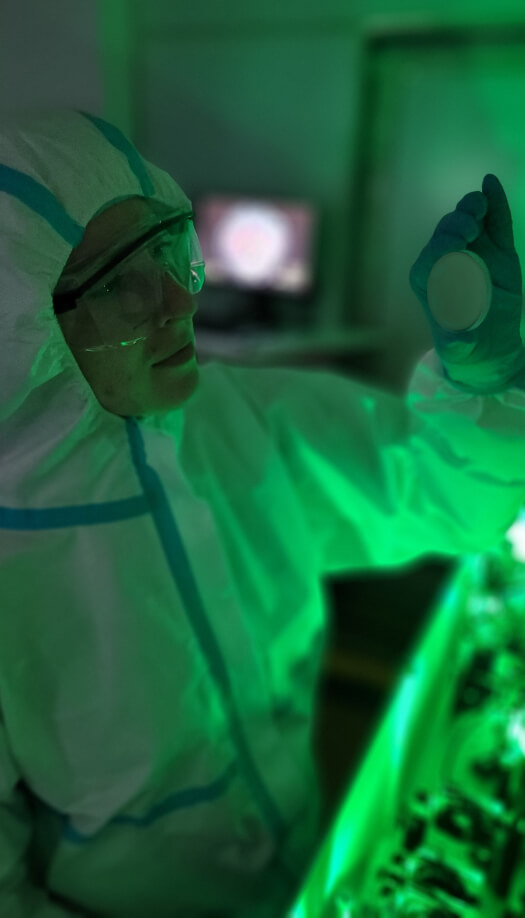
"Classical" Lifetime Test
Lifetime test explained:
Use this test for:
- Prediction of optics lifetime in fs and ps regime at kHz repetition rate
Test description
A classical lifetime testing approach is based on S-on-1 testing, were S represents maximum irradiation dose in pulses or time. To estimate lifetime multiple S-on-1 tests are needed with different irradiation dose S. But let’s discus how a single S-on-1 test is conducted first.
Sample’s surface is divided into a virtual matrix of sites. Each test site is visually inspected under microscope prior laser exposure. An inspected site is then exposed to a burst of maximum S laser pulses with fixed laser peak fluence. Distinct fluences levels are applied for individual test sites. After exposure, the status of irradiated site is inspected with offline microscopy and interpreted as either “survived”, “non-catastrophic” or “catastrophic” damage. Collected statuses and damage statistics are then used to calculate damage threshold of every failure mode for the applied laser pulses (exposure dose S).
Next maximum, different amount of applied laser pulses S is set and S-on-1 procedure is repeated again. By continuing in this type of testing multiple times, the LIDT dependence versus the number of applied laser pulses (exposure dose) is obtained for each failure mode.
Finally, by having LIDT data trend versus time it is possible to use an extrapolation to make a prediction of the future. By applying advanced statistical methods, a prognosis of long-term behavior is made for each failure mode. Now, by having prognosis of LIDT, a useful lifetime can be estimated at the selected fluence level of interest.
Currently we offer “Classical lifetime” testing
at these (fs, ps) conditions:
| Wavelength | Pulse duration(1) | Repetition rate | Pulses per irradiation level |
| 1030 nm | 10 ps | 50 kHz | 10 000 000 |
| 1030 nm | 180 fs | 50 kHz | 10 000 000 |
| 1030 nm | 180 fs | 100 kHz | 100 000 000 |
| 515 nm | 180 fs | 50 kHz | 10 000 000 |
| 343 nm | 180 fs | 50 kHz | 10 000 000 |
| 800 nm | 40 fs | 1 kHz | 1 000 000 |
| Custom | Check all availability or configure your own at my.lidaris.com | ||
(1) effective pulse duration measured at Full Width Half Maximum
Testing conditions

Test bundles and packages
-
Find out more ›
Optics Characterization Bundle for CW regime at 1070 nm
The testing package consists of multiple tests, which are carefully selected to address optics characterization issues at the CW regime. -
Find out more ›
Lifetime + Certification Bundle for Industrial Grade fs-ps Laser Optics
The package consists of several tests carefully selected to address optics certification for critical applications.
more tools
and useful information
-
Find out more ›
Testing conditions
Check out all available laser damage testing conditions (wavelengths, pulse regimes, environments, and more). -
Find out more ›
Laser Damage infobase
Check out a useful glossary of terms and simple explanations related to the main topics of laser damage terminology. -
Find out more ›
New client guide
Here you will find usefull guidlines and suggestions for everyone, who is new the laser damage field.
